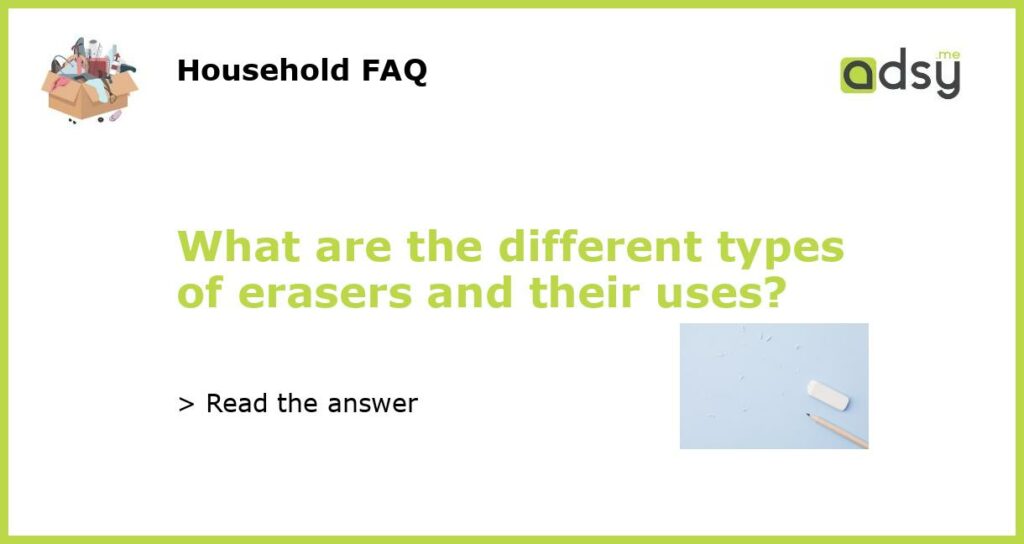Erasers 101: Understanding the Different Types and Their Uses
Erasers are an essential tool for anyone who writes, draws, or makes mistakes. They allow us to correct errors and create clean, polished work. However, not all erasers are created equal. There are several different types of erasers, each with its own unique properties and ideal uses. In this article, we will explore the most common types of erasers and how to choose the right one for your needs.
Vinyl Erasers: The All-Purpose Eraser
Vinyl erasers are the most common type of erasers, often seen in schools and offices. They are made of synthetic rubber and have a soft, pliable texture that makes them ideal for general use. Vinyl erasers are effective at removing graphite, charcoal, and pastel marks from paper. They are also gentle on the paper, minimizing the risk of tearing or smudging. If you need an eraser for everyday writing and sketching, a vinyl eraser is an excellent choice.
Kneaded Erasers: The Artist’s Best Friend
Kneaded erasers, also known as putty erasers, are loved by artists for their versatility and control. They are made of a pliable, self-adhesive material that can be shaped and molded into any form. Kneaded erasers are ideal for lifting off graphite, charcoal, and colored pencil marks. They can be used to create highlights, soften edges, and blend colors. Additionally, kneaded erasers do not leave behind any eraser shavings, making them perfect for delicate or detailed work. If you are a visual artist, a kneaded eraser should be in your toolkit at all times.
Gum Erasers: Tackling Tough Marks
Gum erasers, also called art gum erasers, are another popular choice among artists. They are made of natural rubber or synthetic rubber compounds and have a gritty texture. Gum erasers are excellent for removing stubborn marks, such as ink, colored pencil, and pastel stains. They can also be used to lighten or erase layers of charcoal or graphite. While gum erasers can be effective, they are also abrasive and can damage the paper if used with too much pressure. Use caution when using gum erasers, especially on delicate or thin paper.
Mechanical Erasers: Precision and Convenience
Mechanical erasers, also known as pen-style erasers, are a modern take on traditional erasers. They consist of a small eraser housed inside a mechanical barrel or holder. Mechanical erasers are popular among architects, drafters, and anyone who requires precision erasing. These erasers allow for controlled, pinpoint erasing and can easily fit into tight spaces. They are perfect for erasing fine lines, small details, and correcting intricate drawings. If you are a professional or someone who values precision, a mechanical eraser is a worthwhile investment.
Electric Erasers: Power and Efficiency
Electric erasers are a more advanced option for those who need serious erasing power. These erasers consist of a small motor that creates rapid erasing motion. Electric erasers are often used by professional artists, architects, and animators who require efficiency and accuracy in their work. They can erase graphite, charcoal, and ink marks quickly and effectively. Electric erasers are particularly useful for large-scale projects or areas that need extensive erasing. However, they can be expensive and may require additional refills or batteries. If you are a power user or work on projects that demand speed and precision, an electric eraser could be a game-changer for you.
Choosing the right eraser for your needs will greatly improve your writing, drawing, and artistic endeavors. The different types of erasers discussed in this article each have unique properties that make them suitable for specific tasks. Whether you need an all-purpose eraser, a precision tool, or a heavy-duty eraser, there is an option available for you. Experiment with different erasers to find the ones that feel most comfortable and deliver the best results for your work. Happy erasing!






